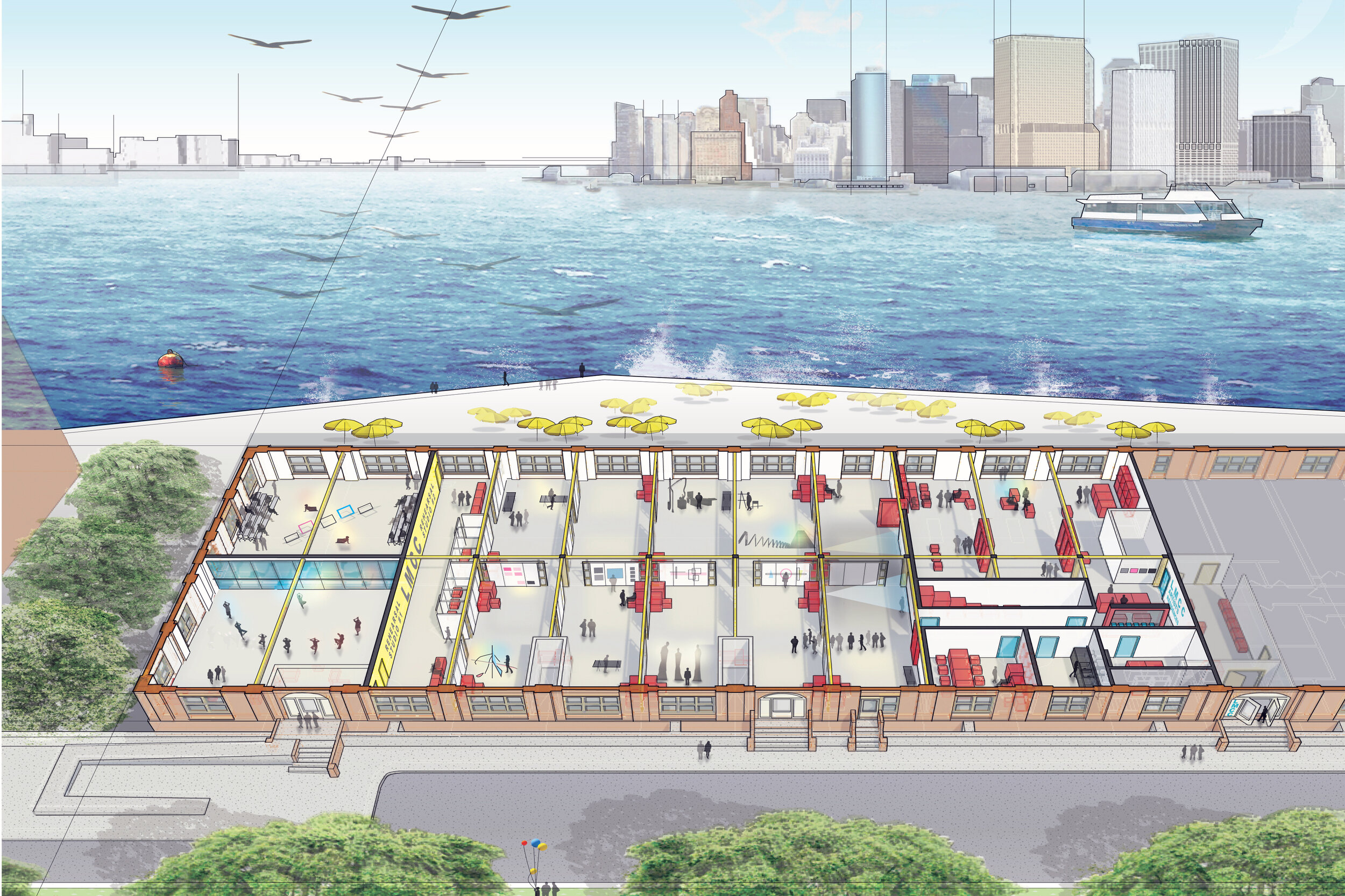Building 110 Artist Studios
Governors Island
New York, NY
14,000 SF • FOR THE LOWER MANHATTAN CULTURAL COUNCIL (LMCC)
In 2008 The Trust for Governors Island, a former military installation in Manhattan harbor, issued a public RFP to develop one of their empty buildings for an arts program. Part of a broader effort to promote the island as a cultural destination, the Trust offered the opportunity to convert a historic former Army warehouse to cultural and public uses. The Lower Manhattan Cultural Council (LMCC), an organization dedicated to promoting the arts in Lower Manhattan, asked Davis Brody Bond to assist them in programming and test-fitting the building as a cultural venue, and to include space for their artist in residence program.
Following their selection, Davis Brody Bond designed a 14,000 sf visual and performing arts space dedicated to artistic development and public presentation. The project was completed in just ten months with a fairly modest budget. The award required a public access component that welcomed visitors during the Governors Island open summer season. To address this objective, the center includes a 2000 sf flexible gallery space to exhibit work produced by artists during their retreat-style residencies at Building 110.
Two 1400 sf rehearsal studios were also provided for music and dance, and to serve as venues for public performances. The remainder of the space comprises twenty 250 sf visual arts studios and support spaces such as lockers, a work-room, pantry, and offices for on-site assistants — all with sweeping views of the New York Harbor and set amongst the serenity of the Island’s northern side.
A feature unique to LMCC projects are the portable wall systems that were installed throughout the project. Each system acts as a kit of parts that can be tailored to meet the need of the individual spaces they are meant to serve — both separating each artist’s ‘studio’ from another while providing ample presentation work surface. The goal is to create environments that are not only consistent in appearance throughout each LMCC location, but to reduce the waste material produced, essentially recycling a major project component with each move.
(Photography courtesy of LMCC and Davis Brody Bond)
Goverrnors Island Building 110, original historic exterior
Portable Wall Systems that were installed throughout the project act as a kit of parts that can be tailored to meet the need of the individual spaces they are meant to serve — both separating each artist’s ‘studio’ from another while providing ample presentation work surface.
Christopher Williams performance group. Two 14,00 sf rehearsal studios were provided for music and dance, and to serve as venues for public performances.
Closing Weekend of “The Truth is I Am You,” an exhibition as part of InSite
“Floating World” installation by Jae Hi Ahn
Artist studios before renovation
Artist studios during renovation
Studio talk by artist-in-residence Matt Jensen
Hank Willis Thomas, member of The Cause Collective, a collaborative that exhibited “The Truth Is I Am You”
Swing Space artist-in-residence Brad Farwell in his studio
Swing Space artist-in-residence Aisha Bell in her studio
Artist-in-residence Jayoung Yoon in her studio
Building 110 brand and temporary building signage, designed by DBB Graphics
Temporary signage was installed at existing historical shutter mounts, to preserve the integrity of the existing historical building











